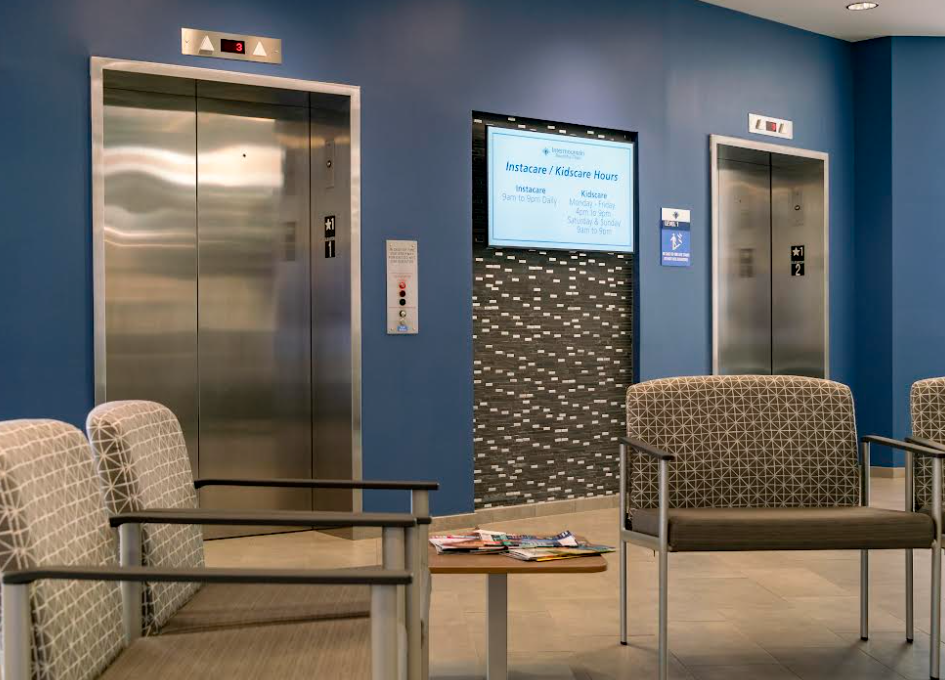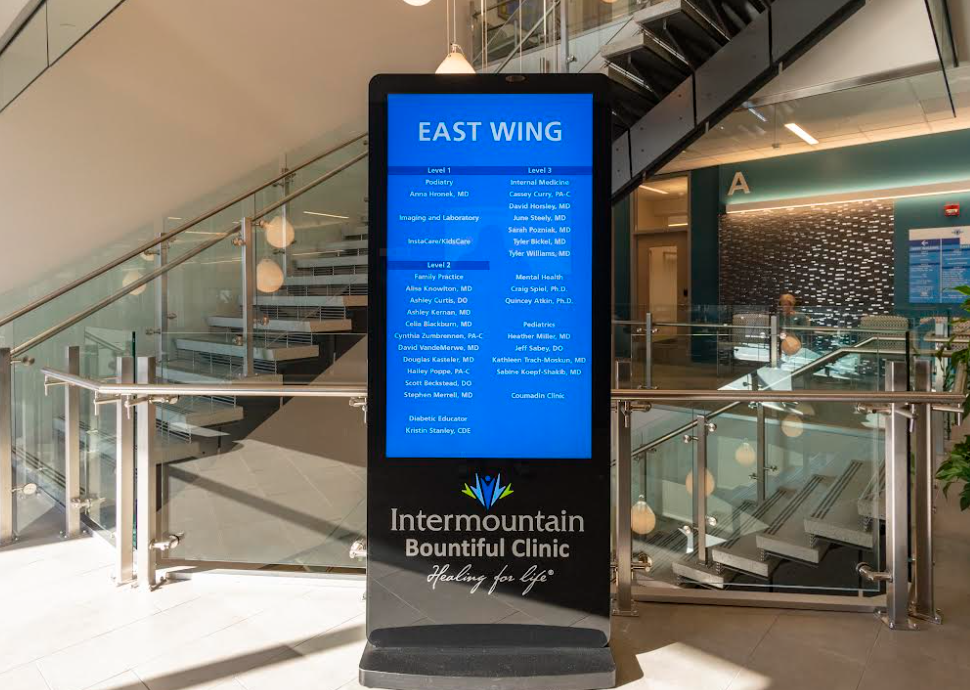In the fast-paced and ever-evolving world of healthcare, medical offices are increasingly focusing on improving patient experience, operational efficiency, and communication within their facilities. While many of these offices have embraced new technologies, one solution that has proven to be a game-changer is the integration of digital displays. These versatile and dynamic tools have become essential in modern medical environments, transforming the way practices engage with patients, streamline operations, and enhance service delivery.
In this thought leadership piece, we will explore how digital displays provide significant benefits to medical offices and why they should be considered an indispensable part of the healthcare landscape moving forward.
1. Improving Patient Experience and Satisfaction
One of the primary challenges for medical offices today is managing the patient experience. Long wait times, confusing signage, and unclear communication can contribute to patient frustration, leading to lower satisfaction levels. Digital displays address these challenges by improving communication and creating a more efficient and engaging environment.
In the waiting room, for example, digital signage can display important information such as estimated wait times, upcoming appointments, and relevant health tips. This not only keeps patients informed but also reduces anxiety during wait periods. Patients are less likely to feel uncertain about how long their wait will be if they can see a real-time update on a digital display. Additionally, engaging content such as educational health videos, wellness tips, or announcements of upcoming health events can keep patients entertained while they wait, enhancing their overall experience.
Moreover, digital displays can be used to create a more comfortable, welcoming atmosphere. By incorporating soothing visuals, such as nature scenes or calming animations, medical offices can create a more relaxed environment, helping patients feel at ease during their visit. For healthcare facilities that prioritize patient-centric care, these small touches can make a significant impact on patient satisfaction.

2. Streamlining Operations and Reducing Staff Workload
Beyond patient-facing benefits, digital displays can also streamline internal operations and reduce the administrative burden on staff. With a network of digital displays across the facility, medical offices can automate many of the tasks that would otherwise require staff to manage manually, allowing them to focus on higher-value activities.
For example, digital signage can be used for appointment check-in. Patients can use interactive touchscreens to confirm their details, reducing the workload for reception staff. Additionally, these systems can automatically send reminders about upcoming appointments or request feedback after visits, minimizing manual outreach and follow-up calls.
In larger medical offices or multi-practice settings, digital displays can also help direct patients to the appropriate areas. Interactive wayfinding systems guide patients to exam rooms, restrooms, or other services, reducing confusion and improving patient flow. This creates a more organized, efficient environment where staff can focus on providing high-quality care rather than constantly managing patient movement.
3. Enhancing Communication and Transparency
Clear, transparent communication is essential in healthcare settings, particularly when it comes to managing patient expectations. Digital displays provide a platform for real-time, effective communication across the facility. Whether it’s an update on delays, instructions for patients, or reminders about policies, digital signage ensures that all patients receive the same information at the same time.
For instance, digital displays can show real-time wait times or notify patients of any scheduling changes. This proactive communication can significantly reduce frustration and confusion, helping patients feel more informed and in control of their experience. Similarly, important messages regarding COVID-19 protocols, safety measures, or new services can be broadcast across the facility, ensuring that patients and staff alike are aware of essential updates.
By automating communication through digital displays, medical offices can provide a more seamless experience for patients while ensuring that important information reaches the right people at the right time.
4. Educating Patients and Promoting Preventive Care
Patient education is a crucial component of healthcare delivery, and digital displays can serve as an effective tool for delivering important health information. By providing easy-to-understand, visually appealing content, medical offices can educate patients on a variety of topics, from managing chronic conditions to preventive care strategies.
For example, a display in the waiting room can show videos or infographics about healthy lifestyle choices, proper nutrition, vaccination schedules, or common medical procedures. Providing this type of educational content helps patients better understand their health, empowering them to make more informed decisions and take proactive steps toward improving their well-being.
Moreover, by focusing on preventive care, medical offices can shift the focus from reactive to proactive health management. Offering content about screening services, early detection programs, and wellness check-ups on digital screens can encourage patients to prioritize preventive care, ultimately leading to better health outcomes.
5. Increasing Revenue and Upselling Opportunities
While the primary focus of medical offices is patient care, it’s also important to consider the revenue-generating potential that digital displays can offer. By showcasing additional services or products, medical offices can create new upselling opportunities.
For example, digital displays in the waiting area can promote in-house services such as vaccinations, physical therapy, or weight loss programs. They can also be used to inform patients about available retail products, such as over-the-counter medications, supplements, or health equipment. Interactive displays can even allow patients to book follow-up appointments, order prescriptions, or sign up for wellness programs directly from the screen, creating a seamless sales funnel.
These types of revenue-generating opportunities are often missed in traditional office settings where information is delivered via static posters or flyers. With digital displays, medical offices can provide targeted, engaging content that is tailored to the specific needs of their patients, creating a more personalized and effective marketing experience.
6. Supporting Brand Image and Modernizing the Facility
In an increasingly competitive healthcare market, the physical appearance of a medical office plays a vital role in shaping the overall perception of the practice. Digital displays contribute to a modern, cutting-edge environment, helping medical offices stand out and create a professional, high-tech image.
The dynamic nature of digital signage ensures that content is always fresh and up-to-date, conveying that the practice is invested in using the latest technologies to improve patient care. Whether it’s through educational videos, engaging graphics, or real-time health information, digital displays help communicate that the facility is forward-thinking, technologically advanced, and focused on providing the best patient experience possible.
For medical offices looking to distinguish themselves in a competitive landscape, digital displays can be an impactful branding tool that sets them apart from other practices in the area.
7. Improved Compliance and Regulation Adherence
In healthcare, maintaining compliance with regulations and standards is essential. Digital displays can help ensure that medical offices stay in line with industry guidelines by easily displaying required information, such as privacy notices, patient rights, and office policies.
Regulatory updates can be broadcast across the facility in real-time, helping ensure that all patients receive critical information related to their rights and safety. This reduces the likelihood of missed updates and ensures that medical offices remain compliant with federal and state requirements, minimizing legal risks.

Conclusion:
Embracing the Future of Healthcare with Digital Displays
In an era where patients demand more efficient, transparent, and personalized care, digital displays offer a powerful solution for medical offices looking to enhance patient experience, streamline operations, and increase engagement. From improving communication and patient education to boosting revenue and ensuring regulatory compliance, the benefits of digital signage are far-reaching.
By integrating digital displays into their operations, medical offices not only modernize their environment but also set themselves up for long-term success in a rapidly changing healthcare landscape. As patient expectations continue to rise and healthcare becomes more complex, those practices that embrace these technologies will be best positioned to lead the way in delivering exceptional, patient-centered care.




